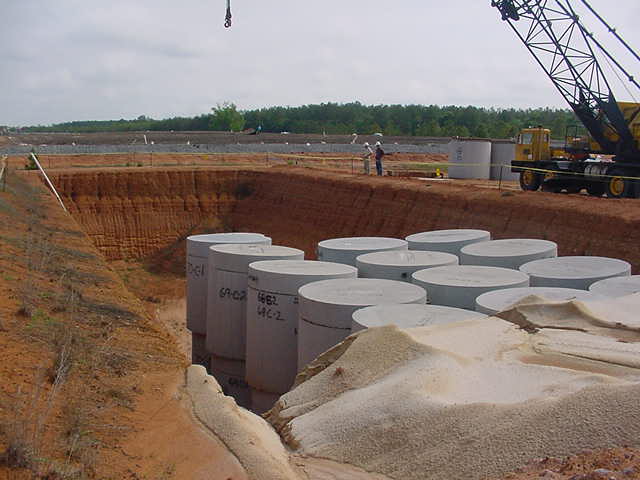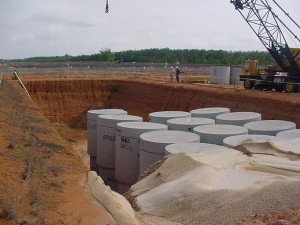
Dealing with America’s nuclear waste: a promising new patent
Three physicists from the University of Texas at Austin have been awarded a U.S. patent for an invention that could turn radioactive waste into energy.
Over time, nuclear reactors produce waste as a result of radioactive decay. This nuclear waste is divided into two categories by the United States Nuclear Regulatory Commission (NRC): spent nuclear fuel and waste materials. Spent nuclear fuel is used nuclear fuel that is no longer radioactive enough to efficiently create electricity. However, it is still highly radioactive and can be reprocessed, albeit with diminishing returns. The NRC’s waste materials category is composed of the nuclear waste remaining after spent fuel has been reprocessed. Both types of nuclear waste can be dangerous to people and to the environment and, as a result, need to be properly stored and managed.
The U.S. currently has no operating nuclear reprocessing plants, due to strangulating regulatory requirements, and the Department of Energy’s previous request to open a plant at Yucca Mountain, Nevada was denied by the NRC. Without reprocessing plants, the U.S. must store its nuclear waste. As of now, 74% of commercial spent nuclear fuel is stored in pools of water at reactor sites and 26% has been transferred to dry storage casks. The United States has no designated permanent disposal site for the close to 70,000 metric tons of spent fuel that is currently stored in 33 U.S. states.
Recently, this problem of storage was overviewed by media sources and investigated by the Government Accountability Office (GAO). GAO determined that the spent fuel stored on-site at commercial nuclear reactors is increasing by 2,000 metric tons a year and that, as proper storage and disposal facilities could take 15-40 years to develop, this amount may reach 140,000 metric tons before it is moved off-site. The GAO report recommends further investigation and the transfer of water-pool stored nuclear spent fuel to dry casks. Current U.S. policies and technology prohibit any other real actions; however, the patent awarded to the three physicists from U.T. may change all of this.
The U.S. patent is for an invention called the Super X Divertor that reconfigures the electromagnetic fields within a fusion reactor to allow the reactor to deal with much hotter temperatures. In simpler words, the Super X Divertor is a heat exhaust system for nuclear reactors. Besides allowing the nuclear reactor to handle higher temperatures, the three scientists – Prashant Valanju, Swadesh Mahajan, and Mike Kotschenreuther – believe that their innovation will allow scientists to build smaller and more compact fusion reactors. So much smaller that they could in fact be combined with the more traditional fission reactors.
In conventional discourse, nuclear power refers to fission energy or the energy obtained from the splitting of an atom. However, nuclear power can also refer to fusion energy or the energy that is released from forcing atomic nuclei together; this process is also the same one that powers the sun (for more information on fusion, visit ASP’s Fusion 2020 homepage). Hypothetically, when fission and fusion reactors are combined the nuclear waste produced by one reactor could then be used by the other to produce more energy. The byproducts of this nuclear waste reprocessing system should be far less radioactive than current reactor waste, ultimately reducing its radioactivity to only several decades instead of 10,000 years.
The three UT scientists have created an innovation with potentially huge environmental implications that could also help create new trade pathways for reprocessing between other nuclear power producing allies. Even more importantly, an active fission-fusion reactor could, if commercialized, produce clean, abundant sustainable energy with very minimal waste byproducts. As of right now, the Super X Divertor is scheduled to be installed as part of a $40 million upgrade to England’s MAST tokamak and will hopefully be tested in 2015. Sadly, it is not uncommon in the field of fusion to invest American made technology overseas. Without significant policy changes and an increase in fusion R&D funds, this process could become systemic and potentially devastating for next-generation American energy competitiveness.
For even more info on fusion check out this article written by ASP Senior Fellow Andrew Holland and ASP Policy Analyst Nick Cunningham
For more info on the issue of America’s nuclear waste check out this paper by the Congressional Research Service







[…] Dealing with America’s nuclear waste: a promising new patent […]